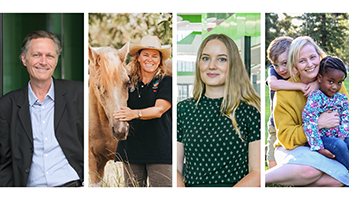Search

News & Events
The Kids researchers named as finalists in 2021 Premier’s Science AwardsFour The Kids Research Institute Australia researchers – working across diverse fields including paediatric anaesthesia, bioinformatics, ear health, and the health impacts of biodiesel exhaust – have been named as finalists in the 2021 Premier’s Science Awards.

News & Events
Four The Kids researchers in running for West Australian of the Year AwardsFour outstanding The Kids Research Institute Australia researchers, including Institute Director, Professor Jonathan Carapetis AM, have been named finalists in the 2021 Western Australian of the Year Awards.
Research
Finding the optimal regimen for Mycobacteroides abscessus treatment (FORMaT) in people with Mycobacteroides abscessus pulmonary diseaseMycobacteroides abscessus (MABS) is within the non-tuberculous mycobacteria family. It inhabits soil and water, exhibits multi-antibiotic resistance and causes opportunistic lung infections, which may progress to symptomatic MABS-pulmonary disease (MABS-PD) associated with substantial morbidity, increased healthcare utilisation, impaired quality of life and increased mortality.
Research
Intrauterine growth restriction promotes hypothalamic circadian dysregulation in adult mouse offspringAdverse prenatal conditions can induce intrauterine growth restriction and increase the risk of adulthood metabolic disease. Mechanisms underlying developmentally programmed metabolic disease remain unclear but may involve disrupted postnatal circadian rhythms and kisspeptin signalling.
Research
Dysregulated Notch Signaling in the Airway Epithelium of Children with WheezeThe airway epithelium of children with wheeze is characterized by defective repair that contributes to disease pathobiology. Dysregulation of developmental processes controlled by Notch has been identified in chronic asthma. However, its role in airway epithelial cells of young children with wheeze, particularly during repair, is yet to be determined.
Research
Associations between respiratory and vascular function in early childhoodThe link between respiratory and vascular health is well documented in adult populations. Impaired lung function is consistently associated with thicker arteries and higher incidence of cardiovascular disease. However, there are limited data on this relationship in young children and the studies that exist have focussed on populations at high risk of cardiorespiratory morbidity.
Research
Differential cell counts using center-point networks achieves human-level accuracy and efficiency over segmentationDifferential cell counts is a challenging task when applying computer vision algorithms to pathology. Existing approaches to train cell recognition require high availability of multi-class segmentation and/or bounding box annotations and suffer in performance when objects are tightly clustered.
Research
How climate change degrades child health: A systematic review and meta-analysisChildren are more vulnerable than adults to climate-related health threats, but reviews examining how climate change affects human health have been mainly descriptive and lack an assessment of the magnitude of health effects children face. This is the first systematic review and meta-analysis that identifies which climate-health relationships pose the greatest threats to children.
Research
Net benefit of smaller human populations to environmental integrity and individual health and wellbeingThe global human population is still growing such that our collective enterprise is driving environmental catastrophe. Despite a decline in average population growth rate, we are still experiencing the highest annual increase of global human population size in the history of our species-averaging an additional 84 million people per year since 1990.
Research
Pulmonary bacteriophage and cystic fibrosis airway mucus: friends or foes?For those born with cystic fibrosis (CF), hyper-concentrated mucus with a dysfunctional structure significantly impacts CF airways, providing a perfect environment for bacterial colonization and subsequent chronic infection. Early treatment with antibiotics limits the prevalence of bacterial pathogens but permanently alters the CF airway microenvironment, resulting in antibiotic resistance and other long-term consequences.
